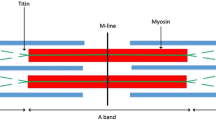Summary
The effects of two α2-agonists (guanfacine and guanabenz) on both the submaxillary and parotid gland of the rat were studied. Whereas guanfacine in doses ranging between 1,000 and 30,000 μg/kg i.v. produced an immediate and persistent secretion of saliva from the submaxillary gland, guanabenz in doses as high as 40,000 μg/kg did not induce measurable secretion either from the parotid or the submaxillary gland. Secretion clicited by guanfacine was not modified by yohimbine (300 μg/kg) but was abolished by prazosin (100 μg/kg).
In both glands, low doses of either guanabenz (10 μg/kg) or guanfacine (100 μg/kg) markedly inhibited the secretory responses induced by noradrenaline, methacholine and substance P, but not that induced by isoprenaline. The inhibition caused by the α2-agonists was greater for noradrenaline than for either methacholine or substance P. Blockade of α2-adrenoceptors with yohimbine (300 μg/kg) did not modify the response to noradrenaline, methacholine or substance P in either gland. However, the same dose of yohimbine injected 5 min before the α2-agonists prevented the inhibitory effects of guanfacine and guanabenz on the response induced by either one of the three sialagogic agents. Guanabenz (10 μg/kg) did not modify the increase in mean blood pressure observed after the different doses of noradrenaline employed to induce salivary secretion. Guanabenz (10 μg/kg) and guanfacine (100 μg/kg) did not change the time course of the secretion elicited by either noradrenaline, methacholine or substance P, since the degree of inhibition was of similar magnitude at all the periods of time analyzed.
The results obtained give further support to the hypothesis that activation of α2-adrenoceptors in the submaxillary as well as parotid gland of the rat inhibits secretory responses which are mediated by either muscarine, substance P and α1-receptors and not those elicited by β-adrenoceptors.
Similar content being viewed by others
References
Abe K, Dawes C (1978) The effects of electrical and pharmacological stimulation on the types of proteins secreted by rat parotid and submandibular glands. Arch Oral Biol 23:367–372
Abe K, Dawes C (1980) The secretion of protein and of some electrolytes in response to α- and β-adrenergic agonists by rat parodid and submandibular salivary glands enlarged by chronic treatment with isoproterenol. J Dent Res 59:1081–1089
Bylund DB, Martínez JR, Pierce DL (1982) Regulation of autonomic receptors in rat submandibular gland. Mol Pharmacol 21:27–35
Distler A, Kirch W, Lüth B (1980) Antihypertensive effect of guanfacine: a double-blind cross-over trial compared with clonidine. Br J Clin Pharmacol 10:495–535
Ekström J, Wahlestedt C (1982) Supersensitivity to substance P and physalaemin in rat salivary glands after denervation or decentralization. Acta Physiol Scand 115:437–446
Elverdin JC, Luchelli-Fortis MA, Stefano FJE, Perec CJ (1984a) Alpha1 adrenoceptors mediate secretory responses to norepinephrine innervated and denervated rat submaxillary glands. J Pharmacol Exp Ther 229:261–266
Elverdin JC, Stefano FJE, Perec CJ (1984b) Physiological role of postsynaptic α2-adrenoceptors in the sublingual gland of the rat. Acta Odontol Latinoam 1:31–35
Gjöstrup P (1984) Effects of some α-adrenoceptor stimulating and blocking agents on the salivary amylase secretion in the rabbit. Acta Physiol Scand 120:567–577
Jerie P (1980) Clinical experience with guanfacine in long-term treatment of hypertension. Br J Clin Pharmacol 10:1575–1645
Kaniucki MD, Stefano FJE, Perec CJ (1984) Clonidine inhibits salivary secretion by activation of postsynaptic α2-receptors. Naunyn-Schmiedeberg's Arch Pharmacol 326:313–384
Leeson CR (1967) Structure of salivary glands. In: Handbook of physiology, Section 6: Alimentary canal 2: Secretion. Am Physiol Soc, Washington DC, pp 463–495
Martínez RJ, Bylund DB, Camden J (1982) Characterization of autonomic receptors in the rat sublingual gland by biochemical and radioligand assays. Naunyn-Schmiedeberg's Arch Pharmacol 318:313–318
Ohlin P (1965) Secretory responses of innervated and denervated submaxillary glands of rats. Acta Univ Lund Sectio II 23: 1–12
Ohlin P, Perec CJ (1965) Salivary secretion of the major sublingual gland of rats. Experientia 21:408
Perec CJ, Stefano FJE, Baratti CM, Tumilasci OR (1975) Effects of 6-hydroxydopamine treatment at birth on the submaxillary gland of the rat. Naunyn-Schmiedeberg's Arch Pharmacol 289:257–274
Pimoule C, Langer SZ (1982) Duct ligation decreases 3H clonidine binding in rat submaxillary glands. Eur J Pharmacol 82: 85–88
Pimoule C, Briley MS, Langer SZ (1980) Short-term surgical denervation increases 3H-clonidine binding in rat salivary gland. Eur J Pharmacol 63:85–87
Sakakibara Y, Muramatsu I, Fujiwara M, Nagasaka Y (1981) Effects of guanabenz on the adrenergic mechanism in rabbit arterial strips. Jpn J Pharmacol 31:1029–1036
Scholtysik G (1980) Pharmacology of guanfacine. Br J Clin Pharmacol 10:21S-24S
Sladeczek F, Bockaert J (1983) Turnover in vivo of α1-adrenergic receptors in rat submaxillary glands. Mol Pharmacol 23: 282–288
Summers RJ, Jarrot B, Louis WJ (1980) Selectivity of a series of clonidine-like drugs for α1- and α2-adrenoceptors in rat brain. Neurosci Lett 20:347–350
Walker BR, Hare LE, Deitch MW, Gold JA (1982) Comparative effects of guanabenz alone and in combination with hydrochlorothiazide as initial antihypertensive therapy. Curr Ther Res 31:764–775
Author information
Authors and Affiliations
Additional information
Partially supported by grants no. 3111 k/83 CONICET and Res 40-5/4/84 SUBCYT
Rights and permissions
About this article
Cite this article
Kaniucki, M.D., Elverdin, J.C., Stefano, F.J.E. et al. Effects of guanabenz and guanfacine on postsynaptic α2-adrenoceptors in the rat submaxillary and parotid glands. Naunyn-Schmiedeberg's Arch. Pharmacol. 329, 289–292 (1985). https://doi.org/10.1007/BF00501882
Received:
Accepted:
Issue Date:
DOI: https://doi.org/10.1007/BF00501882




